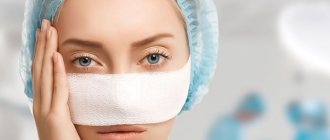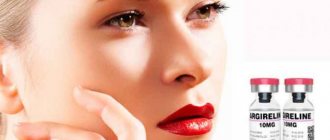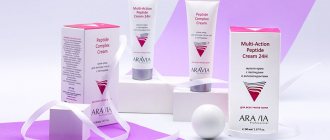One of the new trends in aesthetic medicine and cosmetology is reducing the aggressiveness of the impact and the desire to achieve maximum results through minimal trauma. More and more doctors and cosmetologists are looking for ways to reduce discomfort during the procedure, avoid desocialization during the recovery period, and minimize the risk of complications. This happens not only and not so much because doctors consciously try to follow the principle of “do no harm” and “treatment should not be more severe than the disease.” Rather, the reason for this is the modern lifestyle of patients who cannot afford to take vacations, sick leave or simply allocate a sufficiently long period of time, free from obligations and dedicated only to themselves. Of course, such a lifestyle is more stressful, but the need to rationalize the choice of therapy is, of course, a positive limitation for a cosmetologist.
Complex methods for correcting aesthetic defects attract well-deserved interest from specialists.
, allowing you to solve several aesthetic problems within one procedure. A well-thought-out, comprehensive method of exposure can be an ideal solution to many problems, both for the patient and the doctor.
New technologies in the development of ingredients, the emergence of bacterial synthesis products in cosmetic chemistry, allow us to talk about a new, biotechnological stage in the development of therapeutic cosmetology. Ingredients obtained biotechnologically have a number of fundamental differences in comparison with classic ingredients of plant or synthetic origin. The most important today, perhaps, are peptides obtained by biosynthesis, which open up the possibility of achieving a high level of effectiveness for a limited period of use, have a low degree of allergenicity, and there is practically no addiction to them. A given biological activity for a peptide molecule makes it possible to create drugs and professional procedures, the results of which can be predicted in advance, paying much less attention to the problem of the individual sensitivity of the patient or the qualifications of the cosmetologist performing the procedure.
What are peptides?
As you know, proteins are the building material of any living organism and consist of amino acids. Externally, the protein resembles a chain, the number of links of which depends on the number of amino acid residues included in the protein. Proteins, or chains of amino acids, can be either long or short. Short proteins are called peptides.
Thus, peptides are molecules consisting of two or more amino acids connected to each other by a peptide bond.
Figure 1. Formation of peptide bonds
Peptides are constantly synthesized in all living organisms, regulating physiological processes, therefore they are called regulatory endogenous (that is, produced by the cells of the body) peptides. It is peptides that regulate the expression (activity) of genes, since they are the carrier of a unique code of information for strictly defined types of cells, triggering the synthesis of tissue-specific proteins (a particular peptide acts on a strictly defined type of tissue or organ).
V.H. _ Khavinson, President of the European Branch of the International Association of Gerontology and Geriatrics, Corresponding Member of the Russian Academy of Medical Sciences, Director of the St. Petersburg Institute of Bioregulation and Gerontology, Professor, Doctor of Medical Sciences, Chief Scientific Consultant of the Center for Revitalization and Health:
“There are only two information molecules in the world: DNA (this is a matrix) and peptides. Two molecules carrying information. As soon as the peptide connects with one or another section of DNA, with a gene (because DNA itself is inactive), protein synthesis begins. It is the combination of the peptide and DNA that gives the signal for the synthesis of a specific protein.”
Protein synthesis, namely the implementation of genetic information in living cells, is carried out using two processes: transcription
(that is, the synthesis of template ribonucleic acid on a DNA template) and
translation
of the genetic code into an amino acid sequence.
Each type of tissue in the body has its own peptide: for the lungs - pulmonary, for the brain - brain peptide, etc.
There are peptides for special purposes, for example: growth stimulants, immunomodulators, memory peptides, sleep peptides.
The main task of peptides is to “touch” the desired section of DNA in time, unpack information and synthesize protein. Thus, peptides play the role of regulators and guard the effective functioning of the cell and, accordingly, each organ and each tissue.
The structure of the amino acids that make up the peptide determines its properties and the life processes it provides. The following main properties of peptides in living organisms can be distinguished:
- regulation of cell activity;
- increasing their survival rate;
- acceleration of metabolism at the cellular level;
- removal of decay products from cells;
- improved penetration of nutrients.
With age and pathology in the body, the functions of peptides weaken, which at the cellular level manifests itself, first of all, in disruption of protein synthesis and leads to accelerated tissue wear and aging of the entire organism.
That is why one of the main goals of modern science has become the task of learning to control the proper functioning of transcription factors (peptides), which, in fact, are the keys to both fighting various diseases and prolonging youth (longevity).
The first attempts to synthesize peptides were carried out by isolating them from the body of animals, but at the beginning of the last century the German scientist Hermann El Fischer
Seriously began researching the peptide bond, and in 1905 it became possible to synthesize peptides chemically.
By the 70s of the 20th century, a problem had matured in the USSR: military personnel serving on nuclear missile submarines, in mines and in aviation were subjected to constant stress. Night shifts, accidents and overloads had a negative impact on young, healthy organisms; vital systems (immune, cardiovascular, nervous) failed at an alarming rate. The reason was that a stressful state led to a decrease in protein synthesis in cells, and this, in turn, led to a deterioration in the vital functions of the main organs. This pathology was given the name “premature aging effect.” The military, who were under constant stress, had a slower metabolism, and the body became exhausted and aged after only a few years. It was then that students of the Military Medical Academy Vyacheslav Morozov
and
Vladimir Khavinson
decided to investigate how peptide drugs would affect the mechanisms of aging.
They started with animals: scientists injected experimental rats with peptides isolated from the body of calves. As a result, bold guesses were confirmed: the peptides really helped to increase protein synthesis and restore the functions of major organs!
In aged rats that survived menopause, after peptide therapy, the reproductive system was restored, and they gave birth to healthy offspring. Subsequently, studies were conducted on elderly people, where one group received multivitamins, and the other received peptide drugs (twice a year). A reduction in the mortality rate of the second group was reliably established. These experiments became a revolution in the field of gerontology and changed humanity's understanding of aging.
In total, about 2000 types of peptides are currently known, their properties have been determined and synthesis methods have been developed. Peptides, both natural (obtained by extracting from a separate organ), and those obtained by synthetic and recombinant methods, protect cells from the effects of toxins, accelerate metabolic processes in cells and remove decay products from them, generally normalize the functioning of organs, contribute to their saturation with nutrients, as well as restoration of damaged tissues.
Jeffrey James Botanicals, The Mask, Raspberry Mousse Mud Mask, 2.0 oz (59 ml)
★★★★★
RUB 2,264
Buy now iherb.com
Characteristics
- Available from: 25.09.17 16:25:00
- Product code : JEF-00708
- UPC Code: 852364007085
- Package Quantity : 2 oz.
Description
For all skin types Fresh | Brighter | Newer Cruelty-Free You Glow Sulfate-Free, Paraben-Free Gluten-Free This whipped raspberry mud mask with glycolic acid, bentonite clay, vitamin C and bamboo gently renews your skin's radiance. 6.5% glycolic acid renews skin and restores radiance, bentonite clay removes imperfections. Incredibly lightweight, whipped bentonite clay draws out toxins and dirt from the skin, uses the therapeutic properties of natural bamboo and raspberry to gently exfoliate with antioxidants, a true nourishment for the skin. Our Principles At the heart of everything we do is a belief in the science of nature, and our belief is that true beauty comes from within. We use natural products, pure minerals and active plant extracts to provide your skin with nourishment and long-lasting radiance. Inhale the aromas, feel and enjoy the perfection of nature. Start shining from within.
The use of peptides in cosmetology
As a rule, short oligopeptides are used in cosmetology - small water-soluble compounds containing up to ten amino acids. Based on the number of amino acid residues, dipeptides, tripeptides, tetrapeptides, etc. are distinguished. Peptides containing more than ten amino acid residues are called polypeptides.
Anastasia Vlasova, trainer-cosmetologist at the NikOl Training Center for the use of Christina cosmetics (Israel):
“The most important difference between peptides and amino acids and proteins in cosmetics is that peptides have specific, reliable and measurable biological activity. Although both proteins and amino acids are active in the body, from a cosmetic point of view, proteins have a high molecular weight that allows them to work only within the epidermis, and amino acids are too simple to be active in a cosmetic composition. Peptides are small enough that they easily penetrate the skin, and their structure is quite complex, therefore, they are able to influence physiological processes at the cellular level.”
Figure 2. Difference between peptides and proteins and amino acids
Most peptides are water-soluble, so for better penetration through the skin barrier they are modified with hydrophobic groups, for example, a fatty acid (palmitate) or acetate is attached. Penetrating into the skin directly through the stratum corneum, peptides have a number of positive effects on it.
Natalya Abramova, Methode Cholley brand expert:
“Peptides are effectively used to combat signs of aging and expression lines. They also have a general strengthening effect on the skin, fight free radicals, lighten age spots, improve microcirculation, and have a restorative effect.”
The main purposes of using peptides in cosmetology:
- reduction of wrinkles;
- improvement of turgor, elasticity and skin color;
- reduction of pigmentation;
- reduction of swelling and inflammation;
- fight against rosacea, post-acne;
- narrowing of pores.
At the moment, artificially synthesized peptides are used in cosmetology, which do not have side effects on the body, are hypoallergenic (that is, the risk of allergies is reduced to a minimum) and have practically no general contraindications, with the exception of individual intolerance.
Anastasia Vlasova, trainer-cosmetologist at the NikOl Training Center for the use of Christina cosmetics (Israel):
“The formation of peptides in the body occurs within a few minutes, but chemical synthesis in the laboratory is a rather lengthy process. The development of synthesis technology takes several years, the synthesis itself takes several days. However, despite this, there are quite strong arguments in favor of carrying out work on the synthesis of analogues of natural peptides.
Firstly,
By chemically modifying peptides it is possible to confirm the primary structure hypothesis. The amino acid sequences of some hormones became known precisely through the synthesis of their analogues in the laboratory.
Secondly,
synthetic peptides allow us to study in more detail the relationship between the structure of an amino acid sequence and its activity.
It was possible to find out that replacing just one amino acid in the structure of a peptide can increase its biological activity several times or change its direction.
And changing the length of the amino acid sequence helps determine the location of the active centers of the peptide and the site of receptor interaction! Third,
Thanks to modification of the original amino acid sequence, it became possible to obtain pharmacological drugs. The creation of analogues of natural peptides allows us to identify more effective configurations of molecules that enhance the biological effect or make it last longer.
Fourthly,
chemical synthesis of peptides is economically beneficial. Most therapeutic drugs would cost tens of times more if they were made from a natural product.”
Based on their properties, peptides, which can most often be found in cosmetic skin care products, can be divided into five groups:
Stimulants (matrikine peptides)
Stimulate cells that produce components of the epidermis and dermis: collagen, elastin, fibronectin, glycosaminoglycans, etc.; activate cell division and synthesis of intercellular matrix proteins.
Blockers (neuropeptides or muscle relaxants)
Thanks to their active penetrating ability, they deliver the substance through the protective layer of the dermis and act at the level of neuromuscular synapses, causing relaxation of facial muscles. When using products with blocking peptides, facial expressions are preserved, but become less active. Thanks to these properties, these peptides are today called an alternative to botulinum toxin injections in cosmetology.
Stabilizers
They have a general strengthening effect on the skin associated with improving its own protective potential, especially strengthening the antioxidant defense system.
Regulators of melanogenesis
The activator of melanogenesis in the body is the peptide alpha-melanocyte-stimulating hormone (alpha-MSH), which, by binding to the MC1-R receptor, triggers the production of pigment. Some peptides can bind to this receptor, weakening or enhancing pigment production.
Immunomodulators
The term “immunomodulation” does not mean stimulation or suppression of the degree of immune response, but regulation of the correct ratio of pro-inflammatory and anti-inflammatory cytokines in the skin using synthetic peptides. With age, more pro-inflammatory cytokines are released that activate metalloproteinases (substances that can destroy all types of extracellular matrix proteins) and, as a result, increase the degradation of the extracellular matrix.
More cosmetics with argireline and acetyl hexapeptide-3
Here is one of my favorite creams - an unusual blue color. Acetyl hexapeptide-8 does not play the main role in it, but it is there and does its job. And the main ingredients of this cream are guaiazulene (a dark blue crystalline hydrocarbon, a derivative of azulene) and centella asiatica. A soothing moisturizer that helps restore damaged skin cells - here it is, too, in my photo, with me on a trip, against the backdrop of the Dead Sea in Israel.
Dear, Klairs, Midnight Blue Soothing Cream, 1 oz. (30 ml)
iherb.com
RUB 1,707
Buy now
And many more products with argireline and acetyl hexapeptide-3 can be found on iHerb. Likewise, these peptides will no longer play the main role there, but will expand the effect of cosmetic products with their unique muscle relaxant properties.
Table 1. Individual properties of peptides used in modern cosmetology
| Name (commercial/scientific) | Properties |
| Stimulants | |
| Matrixy (palmitoyl pentapeptide-3) |
|
| Dermaxyl, Biopeptide EL (palmitoyl oligopeptide) |
|
| Biopeptide CL, Trylagen, Aldenine (palmitoyl tripeptide-1) |
|
| Syniorage (acetyl tetrapeptide-11) |
|
| Dermican (acetyl tetrapeptide-9) |
|
| Lipospondin (elaidyl tripeptide) |
|
| Syn-Coll (palmitoyl tripeptide-5) |
|
| Decorin (tripeptide-10 citrulline) |
|
| ChroNoLine (caproyl tetrapeptide-3) |
|
| Serilesine (hexapeptide-10) |
|
| Blockers | |
| Argireline (acetyl hexapeptide-3) |
|
| SNAP-7 (acetyl glutamyl hectapeptide-1) |
|
| SNAP-8 (acetyl octapeptide-3) |
|
| Leuphasy (pentapeptide-18) |
|
| Syn-Ake (diaminobutyrene benzylamide diacetate dipeptide) |
|
| Vialox (pentapeptide-3) |
|
| Inyline (acetyl hexapeptide-25) |
|
| Stabilizers | |
| Aldenine, Kollaren (tripeptide-1) |
|
| Prezatide Copper Acetate (copper peptide) |
|
| Peptamide-6 (hexapeptide-11) |
|
| Preventhelia (diaminopropionoyl tripeptide-33) |
|
| Regulators of melanogenesis | |
| Melanostatine (nonapeptide-1) |
|
| Melatime (palmitoyl tripeptide-30) |
|
| Melitane (acetyl hexapeptide-1) |
|
| Immunomodulators | |
| Palmitoyltetrapeptide-3 |
|
| Rigin (palmitoyl tetrapeptide-7) |
|
| Bodyfensine (acetyl dipeptide-3 aminohexanoate) |
|
| Thymulen-4 (acetyl tetrapeptide-2) |
|
Serums with acetyl hexapeptide-3 from Reviva Labs
In the compositions you can find acetyl hexapeptide-8 and acetyl hexapeptide-3. They are the same peptide, the only difference is the source. Under the trade name Argireline, the Spanish research laboratory Lipote markets acetyl hexapeptide-8, but acetyl hexapeptide-3 is essentially the same ingredient. Here, for example, in Reviva Labs we see acetyl hexapeptide-3 in its composition:
Reviva Labs, Hyaluronic Acid Peptide Facial Solution, Anti-Aging, 29.5 ml
iherb.com
RUB 1,756
Buy now
The use of cosmetic products with peptides for face and body care
Peptide cosmetics appeared in the 70s, when scientists found a way to store peptides for a long time. The method of their “preservation” was invented by the Swiss doctor Warburg ,
having confirmed their hypotheses with experiments, after which it became possible to produce peptide cosmetics, which subsequently gained great popularity throughout the world. Gradually, the market was replenished with drugs for injection procedures.
In this article we will look at two main areas of using drugs with peptides in cosmetology:
Cosmetic skin care products that can be used in cosmetology programs, both manual and using hardware techniques.
Injection techniques: mesotherapy, biorevitalization, contouring (fillers).
Argireline body cream
And I’ll also highlight a cream with argireline for the body with an anti-cellulite effect. Or rather, it's oil. I love it very much - it’s like whipped, like a soufflé:
In the photo I have this cream with me in Jerusalem.
Greensations, Fresh Beauty Market, Anti-Cellulite Oil, 4 oz.
iherb.com
RUB 1,401
Buy now
Cosmetic programs with peptides
Today, there are many types of cosmetic programs with peptides, which are divided depending on the tasks performed:
- rejuvenating and restorative programs
are aimed at improving the oval of the face, increasing skin turgor and elasticity, moisturizing, accelerating metabolic processes in cells, narrowing pores, and correcting wrinkles; - procedures for skin with manifestations of rosacea
are aimed at accelerating the synthesis of the protein aquaporin, which is responsible for transporting fluid into the cell and reducing the vascular network; - programs for problem skin
are aimed at accelerating the microcirculation of fluids, normalizing the functioning of the sebaceous glands, reducing inflammatory processes, and eliminating comedones; - programs to combat hyperpigmentation
; - anti-stress programs
have an anti-inflammatory, protective effect, refresh and moisturize the skin; - body programs
are aimed at intensive restoration and rejuvenation of the skin.
Cosmetics with peptides are produced in the form of cleansers, lotions, tonics, masks, serums, creams, gels, etc. Gradually, surface peelings with peptides appear on the market, which, in addition to their main purpose, simultaneously moisturize and saturate the skin with peptide complexes.
It is important to understand that the effect of using peptide cosmetics is cumulative
, therefore, such cosmetic programs
must be carried out in a course
, the duration of which the cosmetologist prescribes individually, depending on the drugs he uses and the needs (problems) of the client. For example, courses of anti-aging procedures are carried out once or twice a year for 6–8 procedures (two procedures per week). It is also necessary to convey to the client the need to continue using homemade products with peptides to enhance the effectiveness of salon care.
Natalya Abramova, Methode Cholley brand expert:
“Peptides are very active molecules, so the concentration of peptides in home products is typically 0.001 to 3 percent. Professional care containing up to 10 percent peptides will show excellent results in the fight against wrinkles. Peptides primarily mutually enhance each other’s effects and combine well with other active substances.”
Active substances added to cosmetic programs with peptides:
- hyaluronic acid
helps moisturize the skin and has a regenerating effect; - vitamins
(for example, C, E, K) have a strengthening, antioxidant and regenerating effect; - plant extracts
(for example, chamomile, ginseng, rosemary) have a calming, regenerating and anti-inflammatory effect; - essential oils
(for example, shea butter, olive, avocado) are mainly aimed at softening the skin; - enzymes
(for example, proteases and subtilisin) accelerate cell regeneration processes; - botanical lighteners
(bearberry, waltheria indica, licorice, etc.) prevent hyperpigmentation and lighten the skin.
The use of cosmetics that contain peptides has a small number of contraindications:
- acute inflammatory processes at the site of application of cosmetics;
- acute inflammatory eye diseases;
- acute phase of viral diseases;
- heat;
- damage to the skin (scratches, burns, etc.);
- individual intolerance to the ingredients of the drug;
- oncological diseases.
As mentioned above, peptides are able to penetrate into the deep layers of the skin, bypassing the epidermis, due to their nanosize. The size of peptides is no more than 1 nm (nanometer). For clarity, one can imagine that 1 nm is approximately 100 thousand times less than the thickness of a human hair. However, to ensure maximum effect from a cosmetic procedure, it is necessary to create conditions for the functioning of peptides and other active substances in the skin, namely:
- carry out preliminary cleansing of the skin with intensive moisturizing of the stratum corneum to increase its permeability;
- carry out exfoliation to remove keratinized particles and facilitate the passage of peptides and other active substances through the stratum corneum of the epidermis;
- carry out a massage to enhance microcirculation to speed up tissue trophic processes;
- create a protective layer on the surface of the skin to reduce excess fluid loss and ensure the effective operation of peptides in different layers of the skin.
Combination of peptide cosmetic products with hardware techniques
The use of hardware techniques when performing cosmetic procedures using peptide cosmetics can enhance the effect of these drugs. The leaders are devices that help peptides bypass the epidermal barrier:
- electroporation apparatus;
- athermal infrared lasers;
- devices for oxymesotherapy.
1. Electroporation
– creation of pores in the bilayer lipid membrane of the epidermis under the influence of an electric field (see Figure 3).
Figure 3. Creation of pores in a lipid bilayer membrane under the influence of an electric field.
Under the influence of electrical impulses, the permeability of skin cells increases, and specific channels (pores) are formed in them. The permeability of the cell membrane during the procedure increases approximately 400 times (!), through the formed channels the active components enter the cells and begin to perform their functions inside them. The depth of injection reaches 0.5 cm. After stopping the supply of electrical impulses, the cell membrane returns to its original state within about one hundred seconds.
2. Laser phoresis
involves the introduction of a medicinal drug into the deep layers of the skin using low-intensity laser radiation, which can activate molecular bonds. The impact of a therapeutic laser activates cell membrane enzymes and lipid stabilization, stimulates cell division and development, thereby increasing the production of natural collagen and elastin, making the skin more elastic and toned.
3. Oxymesotherapy
– introduction of low-molecular active drugs into the deep layers of the skin under the pressure of a stream of pure (96–98%) oxygen. Peptides are ideal for oxymesotherapy due to their nanosize (Figure 4).
Figure 4. Penetration of active complexes into the skin during oxymesotherapy
In addition to the listed devices, peptide cosmetics can be used with many other hardware procedures: microcurrents, phonophoresis, electrophoresis, etc.
Contraindications to the use of a particular hardware technique must be clarified with the equipment manufacturer.
Argireline (acetyl hexapeptide) as a safe alternative to Botox
Two words about this most relaxing ingredient Argireline (aka acetyl hexapeptide, acetyl hexapeptide-8). This is a compound of amino acids. It did not exist in nature. This amino acid compound was created by man in laboratory conditions. It's safe. It is safe in itself, and its safety is doubled by the fact that it does not need to be injected under the skin, violating the integrity of the skin. This is what really captivates me. I don't want injections! And Argireline for me is a safe alternative to Botox.
Advanced Clinicals, Peptide Serum, 1.75 fl oz (52 ml)
iherb.com
RUB 1,012
Buy now
How Argireline works. Once absorbed into the skin, it blocks neurotransmitter impulses in the facial muscles, causing the muscles to relax. The consequence is that facial wrinkles become less noticeable. The manufacturer Hyalogic even gives figures - wrinkles are reduced by an average of 27%. Maximum results – reduction of wrinkles by 50-60%. Another manufacturer of peptide serum with acetyl hexapeptide, Advanced Clinicals, talks about a visible result after the first day of use (this is exactly what I wrote about above in my experience).
Of course, the effect of Argireline is not as long lasting and not as powerful as Botox injections. While Botox completely stops the transmission of nerve impulses to the muscles, Argireline only slows down their transmission. Those. This undesirable effect of a “Botox face”, devoid of facial expressions, will not happen in this case. But at the same time, as the researchers say, the effect of Argireline is pronounced. Those. this is an effect that can be noticed, which my personal experience confirms.
How to use. Cleanse your face and moisturize with toner
and apply the serum to areas with expression lines. We use it morning and evening. The serum, in addition to Argireline, also contains hyaluronic acid, but to enhance the effect, the manufacturer recommends using additionally a serum with hyaluronic acid or a serum with coQ10:
Hyalogic, Pure Hyaluronic Acid Face Serum, 1 fl oz (30 ml)
iherb.com
RUB 3,750
Buy now
It's Skin, CoQ10 Power 10 Formula Q10 Effector, 30ml
iherb.com
860 rub.
Buy now
This is what I do, but I prefer this serum, which contains 88% hyaluronic acid:
Nature's Way, Hydraplenish, Sodium Hyaluronic Serum, Super Potency, 1 fl oz (30 ml)
iherb.com
RUB 2,552
Buy now
I apply a relaxing serum to areas subject to facial expressions, and then apply hyaluronic serum on top of the entire face, neck and décolleté. It is important to understand that argireline is only a muscle relaxant. This component does not affect the elasticity of the skin or its moisture. That is why, in addition to the relaxing serum, it is important to use the same hyaluronic acid, some moisturizing and nourishing creams.
Oh, while I was writing this post, this serum was sold out right before my eyes. Apparently, even though there are few reviews for it, someone still knows about it and understands what it is. And it looks like they are Asians. :) I didn’t have time to take it at a discount. But I’ll still publish this post now in case it appears before the end of the promotion. And even if it appears later, I will take it anyway. For me this is a must have.
Injection techniques
Mesotherapy
Preparations based on peptides for mesotherapy are produced in the form of ready-to-use solutions (meso-cocktails). The action of peptide meso-cocktails is aimed at relaxing facial muscles, reducing wrinkles, smoothing skin texture, combating age-related pigmentation and even restoring hair growth on the scalp, etc.
Along with peptide complexes, other active components are also introduced into mesotherapy preparations: hyaluronic acid, vitamins, minerals, antioxidants.
Injection mesotherapy is contraindicated for:
- recurrent herpes;
- epilepsy;
- violation of blood clotting processes;
- elevated temperature;
- pregnancy, lactation;
- treatment with photosensitizing drugs;
- individual intolerance to the components of the drug;
- cholelithiasis;
- use of anticoagulants and antiplatelet agents;
- psychological diseases;
- oncological diseases.
Mesotherapy can be carried out using various techniques:
- nappage (superficial mesotherapy). Nappage refers to performing a series of frequent injections of 0.02 ml. There are deep, medium and superficial nappage;
- papular technique. Represents the creation of papules of various sizes for the accumulation of medicinal substances;
- retrograde-linear technique. When performing this technique, a channel is formed in the dermis with the help of a needle, which is evenly filled when it is inserted back.
To achieve a therapeutic effect, mesotherapy must be carried out in a course of:
- active course – from 4 to 12 procedures once every one to two weeks;
- maintenance procedures - once a month.
Biorevitalization
As you know, biorevitalization is a type of mesotherapy, but it has long been separated into an independent section of injection cosmetology. The basis of any biorevitalization drug is hyaluronic acid. Nevertheless, peptides can increasingly be found in biorevitalization preparations. Their action is to activate cell regeneration processes:
- activation of epithelial and endothelial cell division (slowing down skin aging);
- normalization of intracellular metabolism (activation of their growth);
- stimulation of fibroblast growth (normalization of skin restoration processes);
- antioxidant effect (neutralization of free radicals);
- improvement of microcirculation;
- stimulation of the synthesis of collagen, hyaluronic acid, etc.
The course of biorevitalization depends on the client’s age: for clients from 30 to 50 years old, 4 sessions are prescribed every 10–14 days. For clients over 50, 6 sessions are prescribed with an interval of 10–14 days.
Contraindications to the biorevitalization procedure:
- inflammatory diseases (herpes, acne) at the site of planned injections;
- autoimmune diseases;
- pregnancy, lactation period;
- presence of an implant at the site of the planned injection;
- hypersensitivity to the components of the drug;
- oncological diseases.
Fillers (contour plastic surgery)
Recently, intradermal fillers with peptide complexes have begun to appear on the injection contouring market.
The peculiarity of these fillers is that some of the hyaluronic acid cross-links are replaced with peptide bonds. Thanks to peptides, the level of production of endogenous (own) hyaluronic acid and collagen increases, the production of hyaluronidase (an enzyme that breaks down hyaluronic acid) is suppressed, and the duration of action of the gel in the skin is extended.
Contraindications to the use of fillers:
- inflammatory skin diseases (herpes);
- infectious diseases;
- autoimmune diseases;
- disorders of the blood clotting process;
- the presence of implants or other drugs at the site of proposed injections;
- taking anticoagulants;
- oncological diseases.
Derma E, Lifting Eye Cream with Stem Cells, 0.5 oz (14 g)
★★★★☆
RUB 1,405
Buy now iherb.com
Characteristics
- Available from: 22.01.15 0:00:00
- Product code : DME-04175
- UPC Code: 030985041750
- Package Quantity : 0.5 oz.
Description
Lifts & Firms 100% Vegan Soy-Free Eco-Friendly Ethical Copper Peptides Kakadu Plum Lifts & Smoothes Dermatologist-Recommended Gluten-Free Soy-Free Ethical Beauty Clean, effective, and dermatologist-recommended for your skin, your health, and the environment. This is the advantage of DERMA E. Since 1984, we have been committed to skin health and protection. Paraben Free Phthalate Free Formaldehyde Free Petrolatum Free Sulfate Free Mineral Oil Free No Artificial Colors No Artificial Fragrances Revitalize the Eye Area Formulated with firming copper peptides and protective resveratrol, our multi-tasking eye cream visibly lifts and firms the delicate skin around the eye area while smoothing the appearance of fine lines and wrinkles. making the face more toned. Antioxidant Kakadu Plum improves skin texture and elasticity, while plant stem cells help maintain healthy collagen levels.
Jeffrey James Botanicals, Eye Cream, Brightening, Refreshing, 1.0 oz (29 ml)
★★★★☆
RUB 2,152
Buy now iherb.com
Characteristics
- Available from: 08.08.17 16:25:00
- Product code : JEF-00706
- UPC Code: 852364007061
- Package Quantity : 1 oz.
Description
Suitable for all skin types Ethical Paraben & Sulfate Free Glow From Within Gluten Free Vitamin C, Green Tea and Eyebright to brighten and refresh the eye area. This gentle and luxurious moisturizer simply melts into your skin. We've created a delicious blend of licorice, eyebright, grapeseed oil, green tea, vitamins C, E and many other ingredients to nourish and improve the appearance of the delicate eye area. Our ApproachWe believe in the science of nature and believe that true beauty comes from within and guides all our actions. Using simple whole foods, pure minerals and active botanicals, we nourish your skin for a true, long-lasting glow. So enjoy the scent and feel of nature's perfection and glow from within. Geoffrey James, Founder.
Can you get peptides from food?
The general answer is yes, but the benefits you get from eating certain protein foods affect more of the body's cardiovascular, endocrine, and gastrointestinal systems. While all dietary proteins contain peptides, they do not directly affect the skin like selective peptide formulations.
Foods that are the richest sources of peptides are milk, eggs, grains and soybeans. Milk is the richest source of peptides, with many of them found in the protein casein. Eggs are also a rich source of peptides, and research shows they have a protective effect on bone metabolism.
Grains, including wheat and rice, contain more than 80 different peptides. Soybeans also contain a large amount of peptides, which are beneficial due to their ability to suppress tumors.
It's important to remember that antioxidants not only benefit the skin, but also help the body fight disorders of the heart, eyes, and immune system. Increasing your antioxidant intake through diet can help optimize overall health.
But the guarantee of using peptides for skin health is their proper use. Peptides simply have nothing to do with diets and do not contain any dietary requirements.











